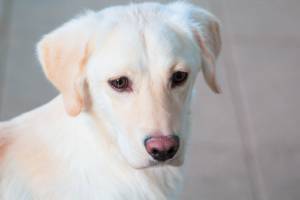
Reverse sneezing, although it may sound alarming, is typically a harmless and temporary condition in dogs. It is characterized by a rapid and repeated forced inhalation through the nose, often accompanied by snorting or gagging sounds. This behavior often looks and sounds worse than it actually is, and it usually resolves on its own without any long-term effects. Despite its benign nature, it’s natural for dog owners to feel worried and wonder why their dog is experiencing this peculiar phenomenon.
There are various reasons why dogs may reverse sneeze, and understanding these causes can help ease your concerns. One common trigger is irritants in the air, such as dust, pollen, or strong odors. Dogs have sensitive respiratory systems, and when they encounter these irritants, it can lead to episodes of reverse sneezing. Additionally, excitement, pulling on a leash, or even abrupt changes in temperature can also induce this behavior. In some cases, small breeds and brachycephalic dogs (dogs with short noses and flat faces) may be more prone to reverse sneezing due to their unique airway anatomy.
As a pet owner, witnessing your dog experiencing a reverse sneezing episode can be distressing. However, it’s important to remember that in most cases, reverse sneezing is not a cause for immediate concern. Dogs typically recover from these episodes on their own without any intervention. Nevertheless, there are a few simple techniques you can employ to help alleviate your dog’s discomfort during a reverse sneezing episode. Gently massaging your dog’s throat or covering their nostrils for a brief moment can sometimes help to stop the episode. Additionally, staying calm and speaking soothingly to your dog can also provide comfort and reassurance.
While reverse sneezing is generally harmless, there are instances where it could indicate an underlying issue that requires attention. If your dog experiences frequent or prolonged episodes of reverse sneezing, or if there are other concerning symptoms present, such as nasal discharge, coughing, or difficulty breathing, it’s crucial to seek guidance from a veterinarian. These symptoms could be indicative of respiratory infections, allergies, nasal mites, or other health issues that may require professional evaluation and treatment.
In summary, reverse sneezing is a common, albeit peculiar, behavior observed in many dogs. Understanding the triggers and knowing how to respond can help alleviate your worries and ensure your dog’s well-being. While most cases of reverse sneezing are harmless and resolve on their own, it’s always wise to monitor your dog’s overall health and seek veterinary advice if you have any concerns. Remember, being a caring and attentive pet owner means being there for your dog during both the ordinary and the unexpected moments in their life.[/fusion_text]



